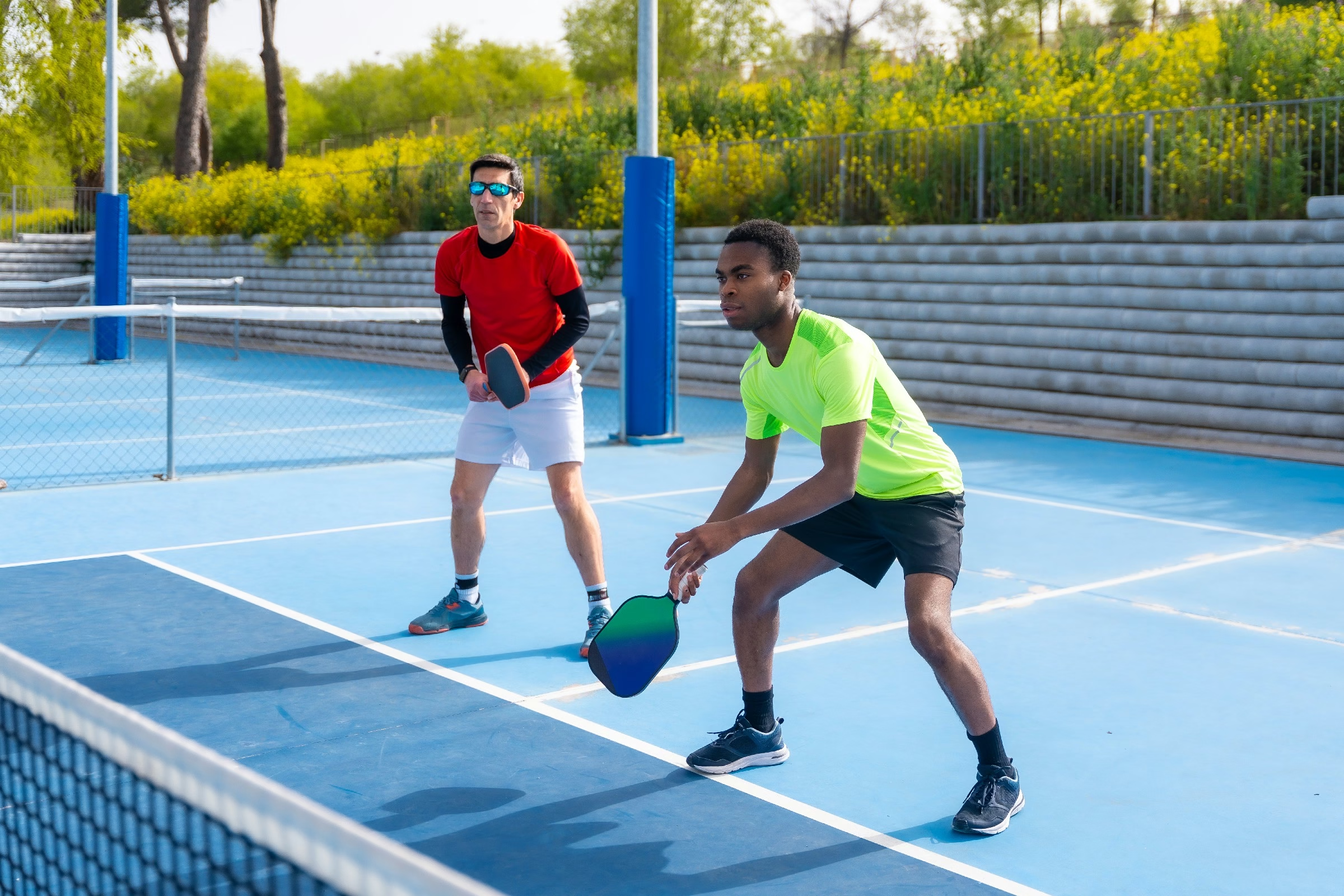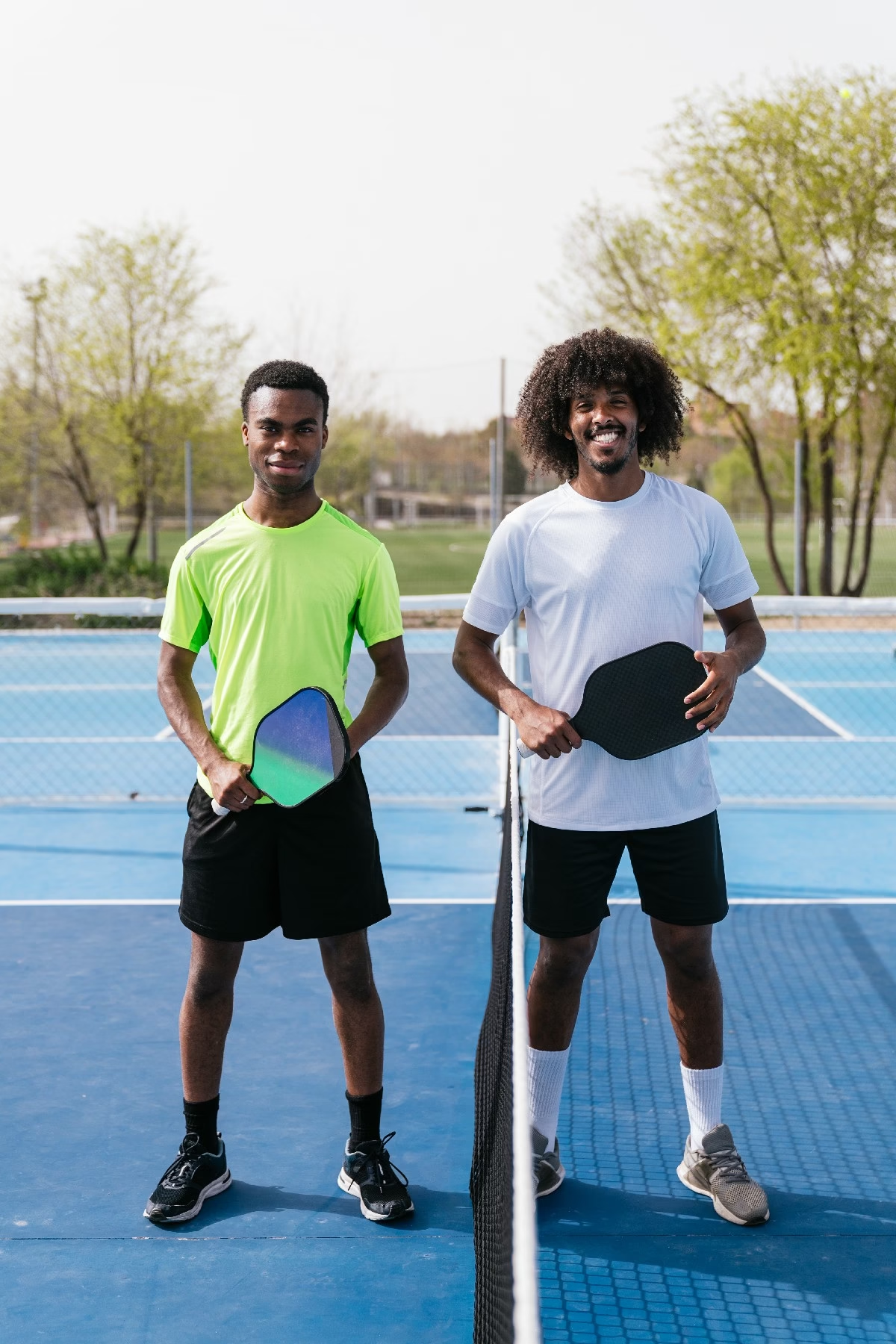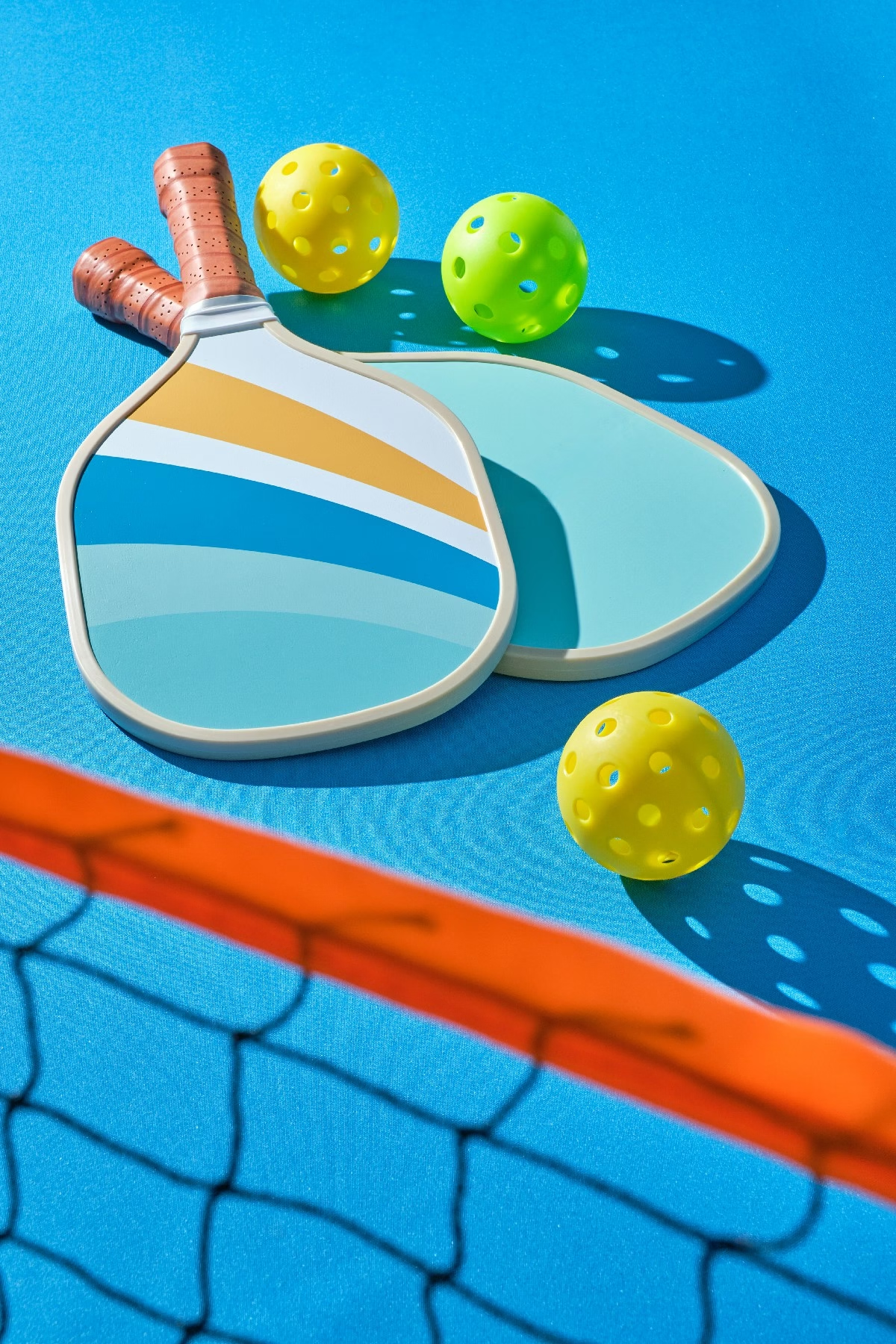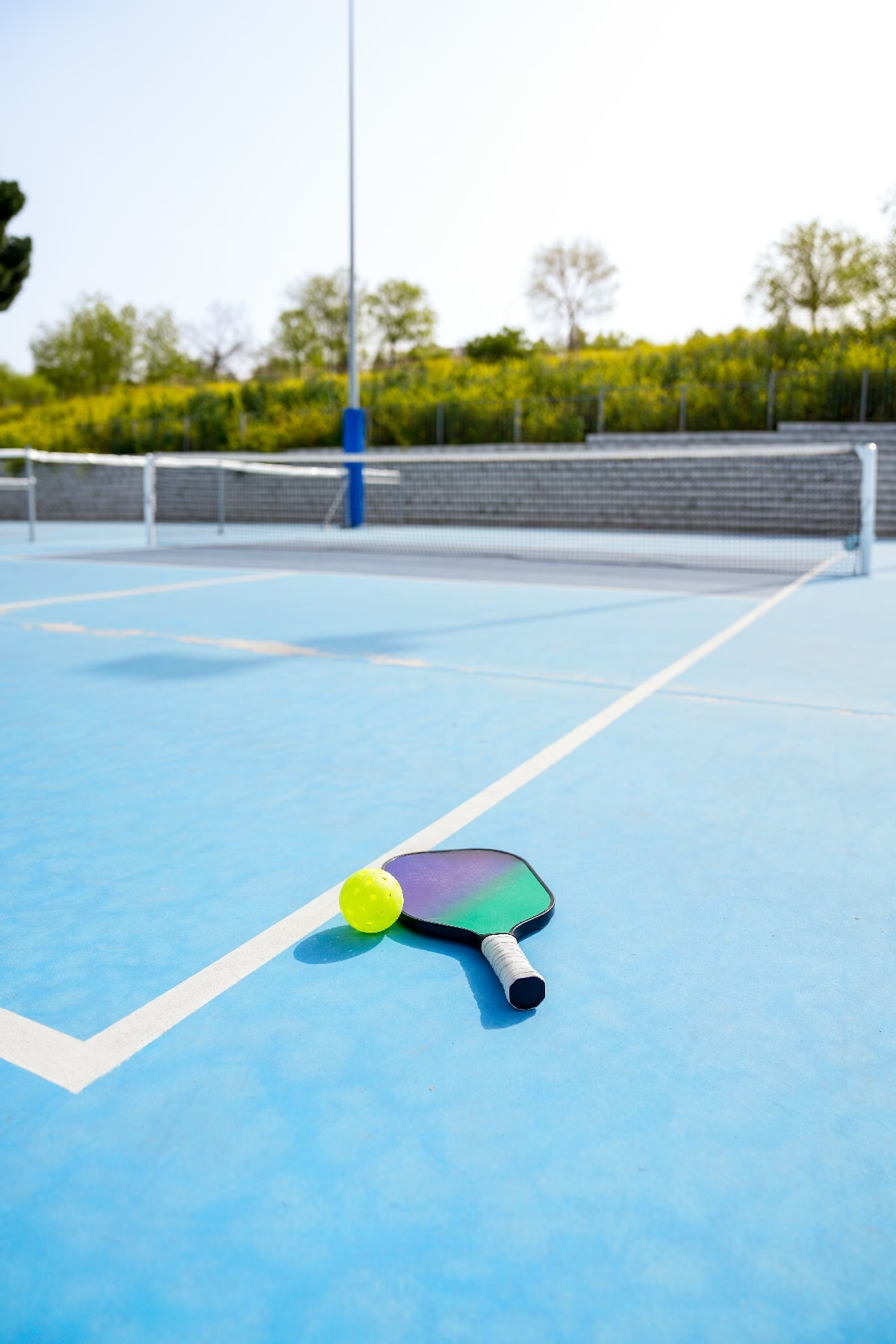Blog
what makes a quiet pickleball paddle

In the vibrant world of pickleball, where energetic rallies and spirited competition thrive, the instruments of play can often wield as much influence as the athletes themselves. Among these critical tools, the pickleball paddle is paramount; yet, not all paddles are created equal. For those drawn to the subtler side of the game, the quest for a “quiet” pickleball paddle beckons—a pursuit that marries performance with discreet elegance. But what exactly defines a quiet paddle? Is it the materials used, the construction techniques, or perhaps even the design ideology behind it? In this article, we delve into the essential attributes that contribute to a paddle’s sound profile, exploring how ingenuity and craftsmanship can create a harmonious balance between playability and peace. Whether you’re a seasoned player looking to minimize noise or a curious novice eager to understand this nuanced aspect of your equipment, join us as we unravel the intricacies of what makes a pickleball paddle truly quiet.
Table of Contents
- Exploring the Anatomy of a Quiet Pickleball Paddle
- Materials Matter: Understanding Sound Dampening Features
- The Role of Paddle Core Construction in Noise Reduction
- Finding the Right Grip: Comfort and Control without Noise
- Comparing Surface Textures: Choosing the Quietest Finish
- Recommendations for the Best Quiet Pickleball Paddles on the Market
- Q&A
- Final Thoughts
Exploring the Anatomy of a Quiet Pickleball Paddle
When diving into the world of quiet pickleball paddles,the most significant consideration is the construction materials. The core plays a pivotal role in sound absorption; paddles often use materials such as polymer or honeycomb composites for their inner cores. These materials are designed to minimize vibration and dampen noise produced upon ball impact, offering players a quieter experience while maximizing performance. In addition, the face of the paddle is typically crafted from fiberglass or graphite, further contributing to the overall sound reduction by softening the energy transfer during play.
Another crucial aspect in achieving a serene playing experience lies in the design of the paddle itself. Many manufacturers incorporate noise-dampening technology through various modifications in paddle construction. Features such as reinforced edges and specialized foam layers can significantly reduce the amount of sound generated when the ball contacts the paddle. The overall shape and weight distribution should also be considered, as a balanced paddle not only enhances control and power but can aid in producing a softer sound during play.
In evaluating the effectiveness of quiet paddles, players can also assess performance metrics such as sweet spot size and spin capability. A larger sweet spot allows for cleaner hits even on off-center strikes, which can minimize unwanted noise. Moreover, enhanced spin has the added benefit of providing more control during gameplay, allowing players to focus on technique rather than sound. Below is a simple comparison table to illustrate some key attributes of quiet pickleball paddles:
| Paddle feature | Benefit |
|---|---|
| Core Material | Reduces vibration and noise |
| Face Material | Softens ball impact sound |
| Weight Distribution | Enhances control and minimizes loud hits |
| Sweet Spot | increases hitting accuracy,reducing noise |
Materials matter: Understanding Sound Dampening Features
When it comes to designing a quiet pickleball paddle,the selection of materials is paramount. The internal structure and outer layers work together to absorb and dissipate sound,resulting in a quieter play experience. Among the key materials contributing to sound dampening are:
- Polyurethane Foam: This material is frequently enough used in the core of paddles to minimize sound production with each hit.
- Composite Face: Composite materials can help reduce vibrations, leading to less noise during ball impact.
- Nylon or Rubber Edges: Padding along the paddle’s edges can further absorb sound, making for a more peaceful game.
Moreover, the combination of these materials plays a vital role in shaping the overall acoustic properties of the paddle. Engineers often experiment with how different layers interact both with each other and with ambient sound. A paddle designed with attention to:
- Layer Thickness: Thicker layers generally provide better sound dampening.
- Material Density: Denser materials tend to absorb more sound waves.
- Construction Techniques: Techniques such as molding or layering can enhance the paddle’s ability to minimize noise.
To gauge the effectiveness of these materials in real-world applications, testing different paddles can illuminate the nuances of sound production. A recent analysis evaluated various paddles based on their material composition and noise output.
| Paddle Model | Core Material | Decibel Level |
|---|---|---|
| Paddle A | Polyurethane Foam | 70 dB |
| Paddle B | Composite | 68 dB |
| Paddle C | Wood and Rubber Edge | 72 dB |
Such analyses demonstrate how the core choices significantly influence the sound dynamics of each paddle,leading players to choose not just for performance,but for a serene playing experience as well.
The Role of Paddle Core Construction in noise Reduction
When it comes to developing a quiet pickleball paddle, the construction of the paddle core plays a pivotal role.The core serves as the heart of the paddle, impacting not just performance, but also the level of sound produced upon ball contact. Various materials contribute to the paddle’s ability to dampen vibrations, translating into a softer sound on impact. Polymer, aluminum, and foam are among the most commonly used core materials, each offering distinct properties that influence noise levels.
Choosing the right type of core material is crucial for enhancing sound absorption. For instance, paddles with a polymer core tend to be notably quieter due to their ability to absorb shock efficiently. On the other hand, aluminum cores provide a crisp feel, which can amplify sound if not designed to mitigate vibrations. Additionally, foam cores are known for their lightweight characteristics and superior damping qualities, making them a sought-after choice for those seeking noise reduction without sacrificing power. Here’s a swift comparison of common core materials:
| Core Material | Noise Reduction | Weight | Durability |
|---|---|---|---|
| Polymer | high | Light | Moderate |
| Aluminum | Moderate | Medium | high |
| Foam | Very High | Very Light | Moderate |
In addition to core material, the paddle’s internal structure also plays a decisive role. The design of the core, including its thickness and layering, can influence how sound waves travel through the paddle. A well-engineered design will not only reduce noise but also improve overall performance. As a notable example, a thicker core can provide more sound absorption, while a strategically layered construction allows for better energy transfer to the ball. Consequently, choosing a paddle with advanced core construction techniques can greatly enhance your playing experience while ensuring minimal noise disruption on the court.
Finding the Right Grip: comfort and control without Noise
Choosing the perfect grip for your pickleball paddle is essential not just for performance but also for enhancing the overall playing experience. A well-designed grip can offer both comfort and control, allowing players to maneuver their paddles effectively without compromising noise levels that can disrupt games. when selecting a grip, consider the following factors that can influence your comfort and performance:
- Material: Look for grips made of high-quality foam or rubber that can absorb vibrations. These materials also help dampen sound, ensuring a quieter game.
- Thickness: The thickness of the grip should match your hand size. A grip that is too thick or thin can lead to discomfort and reduced control.
- Texture: Opt for grips with a textured surface that promotes a firm hold while still feeling gentle on your skin.
Additionally, experimenting with different grip styles, such as the cushioned grip or tacky finish, can refine your experience. As each player has unique preferences based on hand size and playing style, trying out various grips will help you discover the perfect combination of comfort and control. To further guide your choice,refer to the following table illustrating popular grip options and their features:
| Grip type | Comfort Level | Noise Dampening |
|---|---|---|
| Cushioned Grip | High | Excellent |
| Tacky Grip | Medium | Good |
| Rubberized Grip | High | Very Good |
Ultimately,the goal is to find a grip that not only feels right in your hand but also enhances your ability to control the paddle during play. Ensuring that your grip aligns with your style can lead to quieter and more enjoyable games, allowing you to focus on strategy rather than discomfort or unwanted noise. By paying attention to these details, you can transform your sports experience significantly.
Comparing Surface Textures: Choosing the Quietest Finish
When it comes to selecting a pickleball paddle that minimizes sound on impact, the surface texture is a pivotal aspect to consider.Various paddles feature different finishes, each influencing not only the acoustics but also the overall feel and performance.Smooth surfaces, as a notable example, tend to produce a lesser sound compared to those with a rougher, textured finish. this reduction in noise can often be attributed to the way the ball interacts with the paddle upon contact, as smoother surfaces provide a softer touch.
Additionally, paddles that incorporate materials designed specifically for dampening sound can offer significant advantages. Polymer cores or those with composite materials can absorb some sound energy, creating a more muted strike. The following characteristics of surface textures can help players select the quietest finish:
- Porous textures: Often allow for more sound absorption.
- Glossy finishes: can amplify noise due to their hard surface.
- Fiberglass or carbon fiber layers: Typically promote quieter play.
To further illustrate the relationship between surface texture and sound output, the table below compares various paddle finishes and their corresponding noise levels:
| Surface Texture | Noise Level (1-10) | Impact Performance |
|---|---|---|
| Smooth | 3 | Moderate |
| Textured | 6 | High |
| Hybrid (smooth + textured) | 4 | balanced |
Ultimately, players seeking the quietest experience should carefully evaluate their options by considering both the feel and sound characteristics of different paddle surfaces.Each player’s preferences will vary,but understanding the role of surface texture in noise production can lead to more informed choices and enhance the overall enjoyment of the game.
Recommendations for the Best Quiet Pickleball Paddles on the Market
When it comes to selecting a quiet pickleball paddle, one must consider several factors that contribute to noise reduction while maintaining optimal performance. A significant aspect is the material used in the paddle’s construction.Paddles made with composite materials, such as polymer or fiberglass, tend to absorb shock better, resulting in a quieter impact compared to traditional wood paddles. Additionally, paddles featuring a foam core design frequently enough produce less noise during play, making them an attractive option for those looking to keep the sound levels down.
Another critical feature to evaluate is the paddle’s design and shape. Paddles designed with a larger hitting surface may provide more power and control but can also generate excess noise. Opting for paddles with a smaller profile or a rounded edge can enhance quietness, as they create a softer impact with the ball. Various manufacturers also implement noise-dampening technology in their paddles, such as specialized coatings or internal dampers, which significantly reduce the sound generated at contact.
Here are a few of the best options available on the market that combine quiet play with excellent performance:
| Paddle Name | Material | Core Type | Weight |
|---|---|---|---|
| Selkirk Amped | Composite | Polymer | 7.8 oz |
| Paddletek Tempest Wave Pro | Fiberglass | Polymer | 7.4 oz |
| ONIX Z5 Graphite | Graphite | Nomex | 7.6 oz |
Choosing the right quiet paddle ultimately balances comfort, performance, and sound reduction. By focusing on the materials, core types, and innovative designs available, players can enhance their experience on the court while being considerate of others nearby. The paddles mentioned above are among the top choices for those who prioritize a quieter game without compromising on quality or control.
Q&A
Q&A: What Makes a Quiet Pickleball Paddle?
Q: What defines a “quiet” pickleball paddle?
A: A quiet pickleball paddle is designed to minimize sound during play, especially when it makes contact with the ball. This is notably desirable in settings where noise levels are a concern, such as residential areas or indoor courts.
Q: What materials contribute to a quieter paddle?
A: Paddles made of composite materials, such as polymer cores or foam layers, frequently enough produce less sound than traditional wooden or harder composite paddles. The combination of these materials helps dampen vibrations, resulting in a softer “thud” rather than a sharp “ping.”
Q: How does paddle design impact its noise level?
A: The design of the paddle, including its shape and thickness, can play a significant role in sound production. Paddles with a larger surface area or those incorporating thicker edges might absorb more impact energy, creating a quieter experience compared to thinner, more rigid designs.
Q: Is there a specific weight range that tends to produce quieter paddles?
A: generally, moderate-weight paddles, typically ranging from 7.5 to 8.5 ounces, achieve a balance between power and noise reduction.Heavier paddles can sometimes contribute to a louder sound upon striking the ball, as they generate more force.Q: Can the type of ball affect how loud or quiet the game is?
A: Absolutely! The choice of the pickleball itself can contribute to noise levels. Softer balls, like those with a thicker shell or lower bounce, tend to sound quieter upon impact compared to harder, more resilient alternatives.
Q: Are there any brands or models known specifically for their quiet performance?
A: Yes, several brands prioritize noise reduction in their paddle designs. Models that feature advanced polymer cores and enhanced cushioning are often highlighted in reviews and can be grate options for those looking for quieter play experiences.Brands like Engage and Paddletek have developed specific lines noted for their sound dampening qualities.
Q: Do quiet paddles sacrifice performance for sound reduction?
A: Not necessarily! While the focus on quietness might change some performance characteristics, many manufacturers balance sound dampening with power and control, ensuring that players do not have to compromise on their game. It’s essential to find a paddle that feels cozy and meets individual playing styles.
Q: Is there anything players can do to further reduce noise?
A: Players can consider using sound-dampening accessories, such as paddle covers or special grip tapes that also absorb shock. additionally, selecting an appropriate playing surface—like a court with more forgiving materials—can definitely help reduce the overall noise of the game.
Q: What’s the main takeaway for someone looking to purchase a quiet pickleball paddle?
A: Look for materials and designs specifically tailored for noise reduction, while also considering your playing style and comfort. Ultimately, finding the right balance between sound and performance will lead to a more enjoyable and less disruptive pickleball experience.
Final Thoughts
selecting the right pickleball paddle is not just about personal preference; it’s a delicate balance between performance and sound.A quiet paddle can enhance your game, allowing for strategic play without the distraction of noise. as we’ve explored, factors such as paddle material, construction techniques, and core composition all play a role in minimizing sound without sacrificing power or control. Whether you’re a seasoned player looking to refine your skills or a newcomer eager to make a great first impression on the court, understanding these nuances can definitely help you find the perfect quiet paddle that complements your playing style.So, the next time you step onto the court, remember that silence can be golden—giving you the edge while creating a more serene atmosphere for all. Happy playing!












